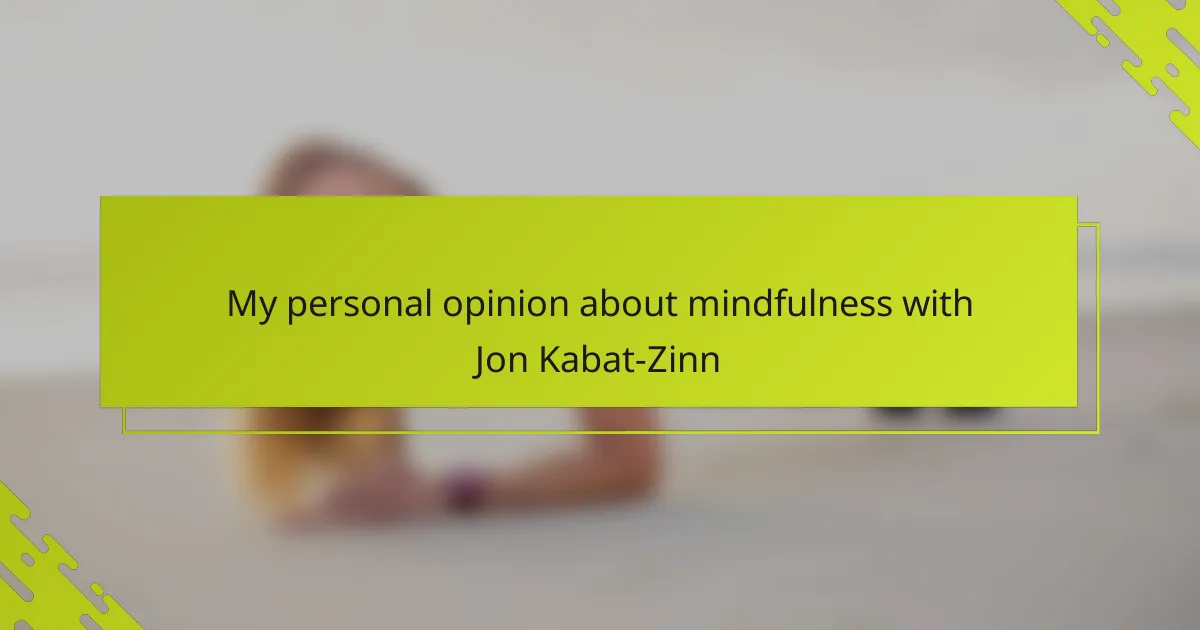Key takeaways
- Mindfulness encourages self-compassion and present-moment awareness, providing a refuge from overwhelming thoughts and emotions.
- Jon Kabat-Zinn’s approach fosters gentle, nonjudgmental observation of experiences, which can help in understanding and accepting discomfort.
- Customized mindfulness practices, such as body scans and walking meditation, can empower individuals, particularly in the queer community, by affirming their presence and experiences.
- Community support plays a crucial role in adapting mindfulness practices, transforming personal journeys into shared healing experiences.
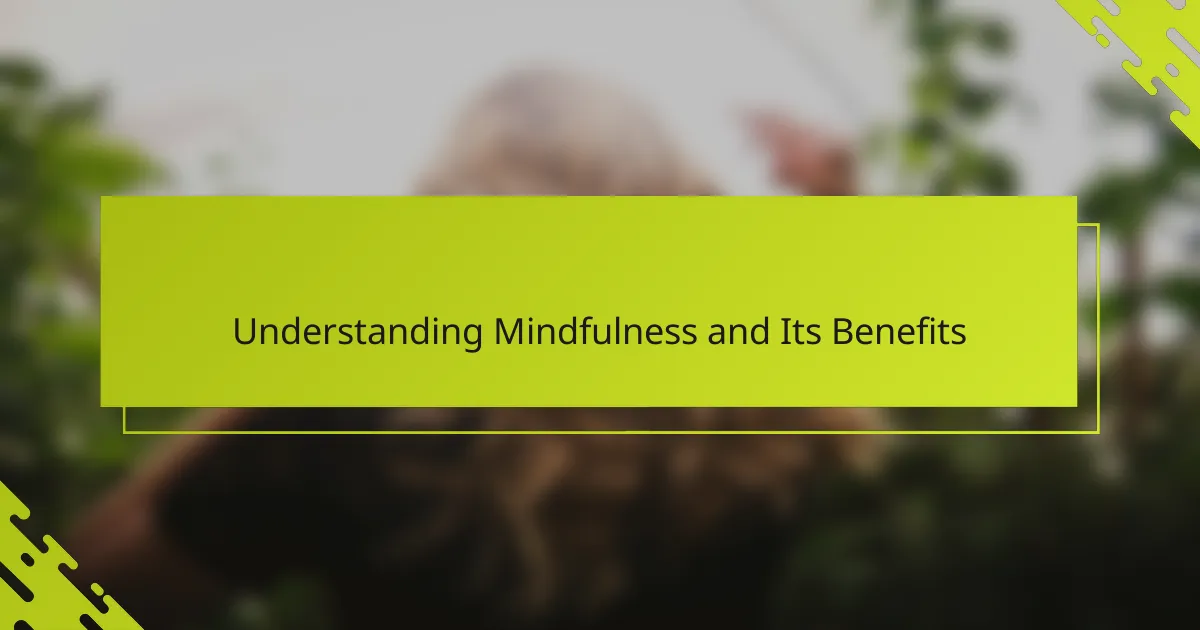
Understanding Mindfulness and Its Benefits
Mindfulness, as Jon Kabat-Zinn often emphasizes, is about paying deliberate attention to the present moment without judgment. When I first tried it, I was surprised by how simply noticing my breath could quiet the noise in my mind. Have you ever felt overwhelmed by your thoughts? Mindfulness offers a way to step back and observe them instead of getting swept away.
One benefit I’ve found particularly powerful is how mindfulness creates space for self-compassion. Instead of rushing through anxieties or internal critiques, it invites gentle awareness. That shift—from harshness to kindness—felt like a small revolution in my daily experience. It’s not about fixing everything but about being present with whatever arises.
Beyond emotional calm, mindfulness has practical advantages too. It sharpens focus and reduces stress by anchoring us in the here and now. From my own practice, those moments of stillness have become a refuge—a pause that refreshes and reorients me to what truly matters. Doesn’t that sound like something we all could use more of?
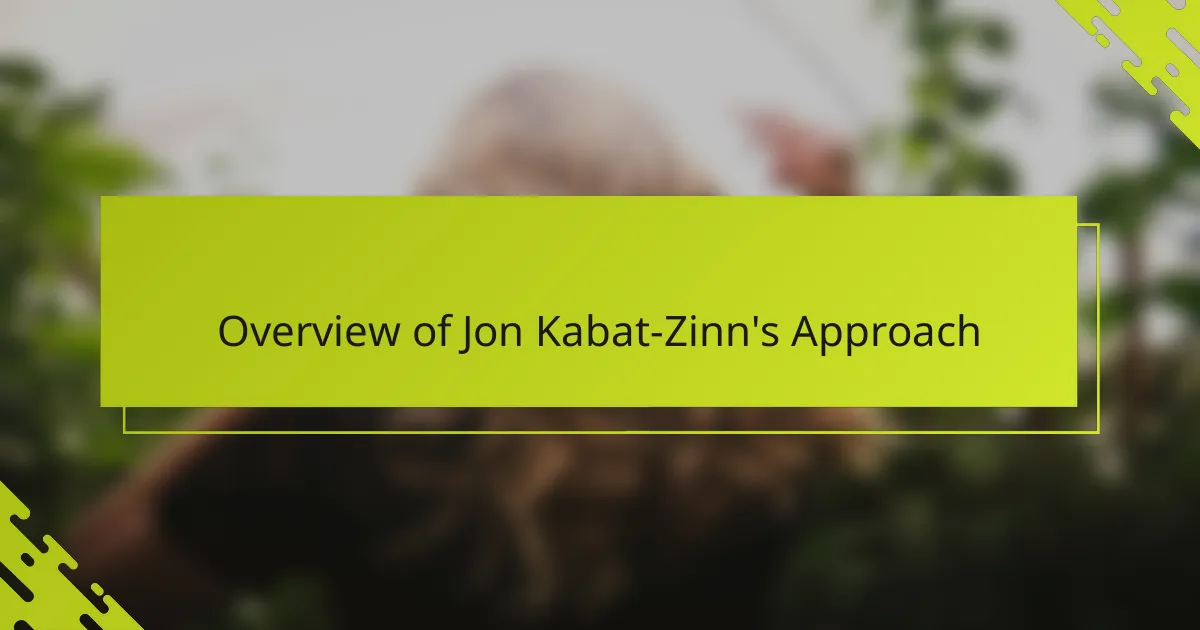
Overview of Jon Kabat-Zinn’s Approach
Jon Kabat-Zinn’s approach to mindfulness is practical and rooted deeply in everyday experience. He created mindfulness-based stress reduction (MBSR), which focuses on bringing gentle, nonjudgmental attention to our present moment. When I first learned about MBSR, I appreciated how it wasn’t about escaping reality, but rather about meeting it with curiosity and kindness.
What stands out in his method is this emphasis on staying with whatever arises, even discomfort or pain. I remember feeling hesitant at first—how could sitting with difficult feelings help? But Kabat-Zinn’s teaching showed me that by simply observing without pushing away, those moments often lose their intensity. Doesn’t that change in perspective help us find peace within chaos?
He also weaves in body awareness, guiding learners to tune into sensations as a way to connect mind and body. This made me realize how disconnected I often am from my physical self, especially under stress. His approach invites us to slow down and discover a new relationship with ourselves—one grounded in acceptance rather than resistance.
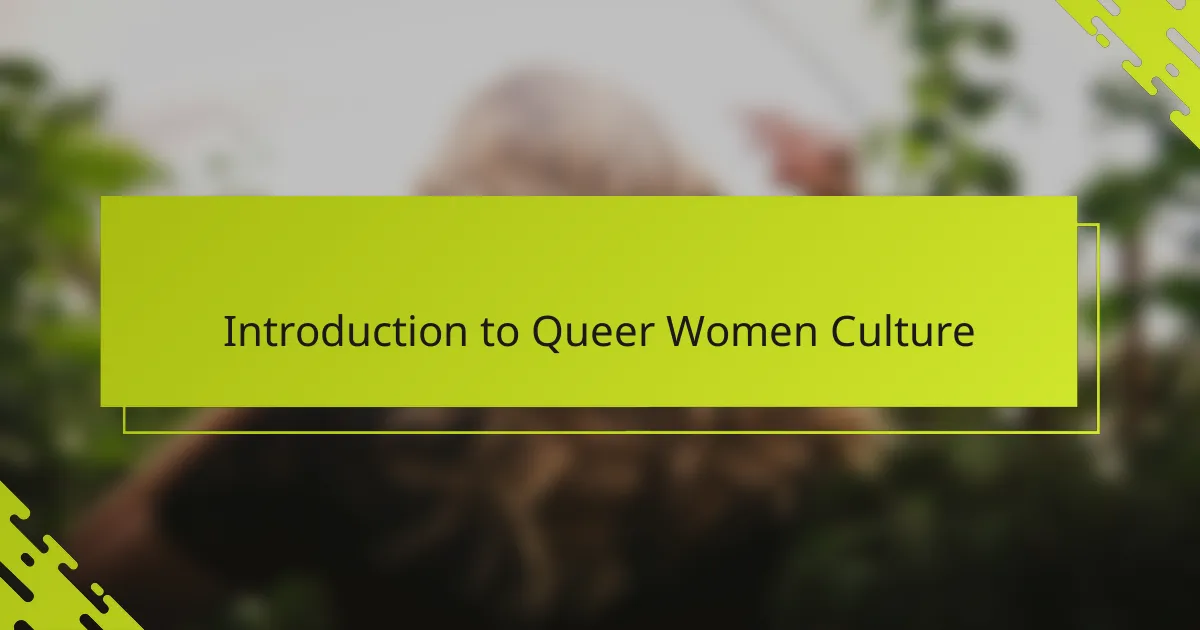
Introduction to Queer Women Culture
Queer women culture is rich with diversity, creativity, and resilience. It’s a space where identities intersect, and traditional norms are lovingly challenged. Have you ever noticed how these communities often create their own languages, art, and rituals to express what mainstream culture misses?
For me, exploring queer women culture has been like opening a door to stories that feel both unique and universally human. There’s this vibrant sense of belonging and defiance that pulses through gatherings, conversations, and everyday life. It’s not just about identity but about celebrating all the complexities that come with it.
What stands out is how deeply connected these communities are to authenticity and self-discovery. I’ve seen how sharing lived experiences can foster empathy and healing, making room for everyone to find their voice. Could mindfulness, with its focus on presence and acceptance, become a natural companion to this journey?
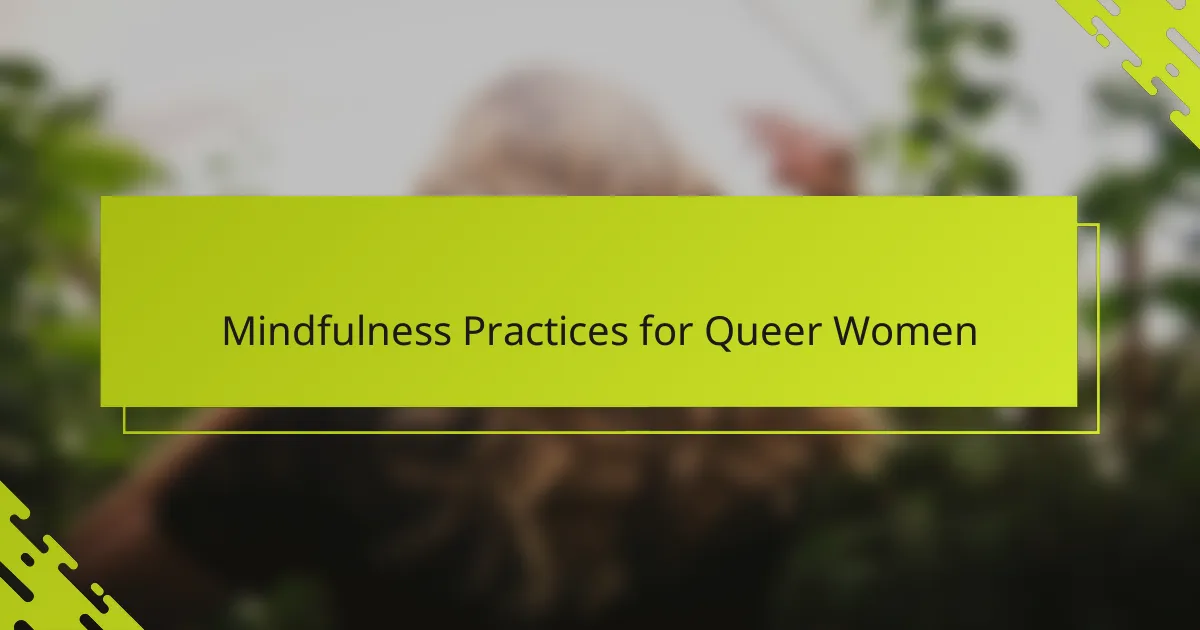
Mindfulness Practices for Queer Women
Mindfulness practices tailored for queer women often resonate deeply because they honor the complexity of our experiences. When I started incorporating body scans—slowly tuning into each sensation—I felt a newfound connection to parts of myself I’d neglected amid navigating societal pressures. Have you ever noticed how affirming your own presence can be a radical act in spaces that don’t always see you?
Breathing exercises, a staple in Kabat-Zinn’s teachings, felt especially grounding during moments when I faced discrimination or invalidation. Focusing on the breath offered a tiny, steady anchor when external chaos threatened to overwhelm me. Could such simple moments of calm help nurture resilience in a community that often carries heavy emotional burdens?
I’ve also found walking meditation to be a beautiful way to reclaim my space—literally and metaphorically—in the world. Moving slowly with awareness, I felt both my strength and vulnerability, which seemed to echo the layered realities of queer women’s lives. What if these mindful pauses not only soothe but also empower us to move forward with greater clarity and courage?
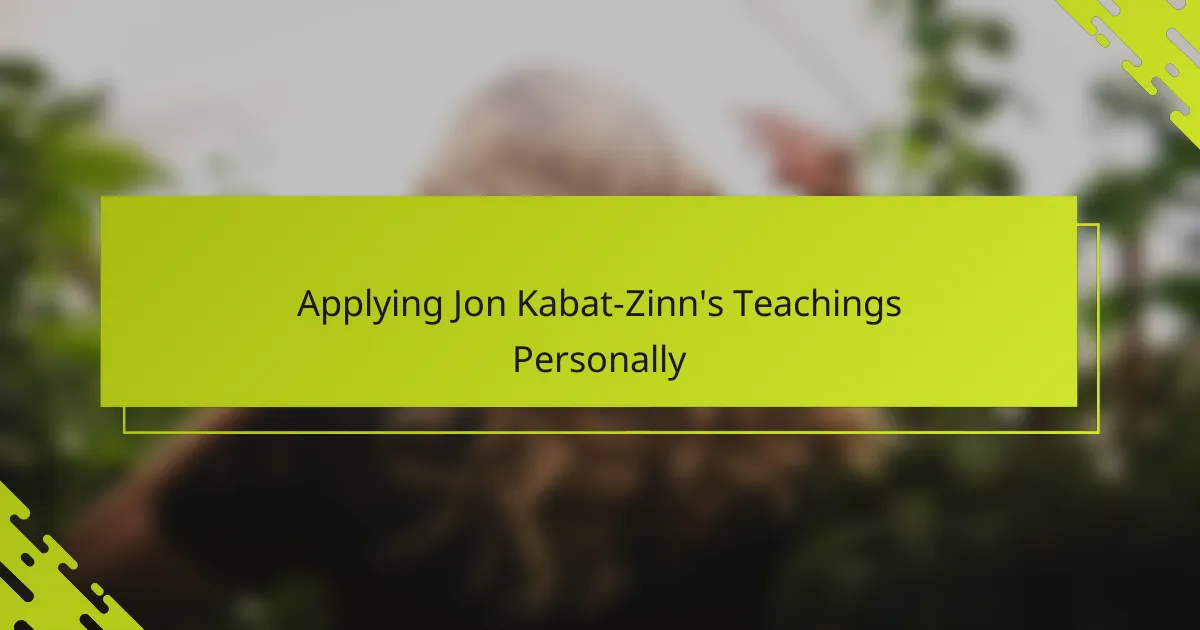
Applying Jon Kabat-Zinn’s Teachings Personally
Applying Jon Kabat-Zinn’s teachings personally has been a gradual unfolding for me. At first, the idea of simply sitting with my thoughts without trying to change them felt strange—almost counterintuitive. Yet, over time, I noticed how this gentle observation transformed moments of anxiety into opportunities for curiosity rather than resistance. Have you ever tried just being with discomfort instead of running from it?
One practice that resonated deeply was the body scan. Paying close attention to physical sensations awakened a tenderness toward parts of myself I’d often ignored, especially when grappling with the weight of external judgments. It was striking how this mindful embodiment created a sanctuary within my own skin—a place to rest and accept, rather than defend or escape.
What continues to captivate me about Kabat-Zinn’s approach is its kindness toward the whole person—from the restless mind to the aching body. It invites a slower pace amid life’s demands, helping me cultivate presence not as a goal, but as a simple way to show up for myself. Could this be the radical self-care queer women often need? I believe it very well might be.
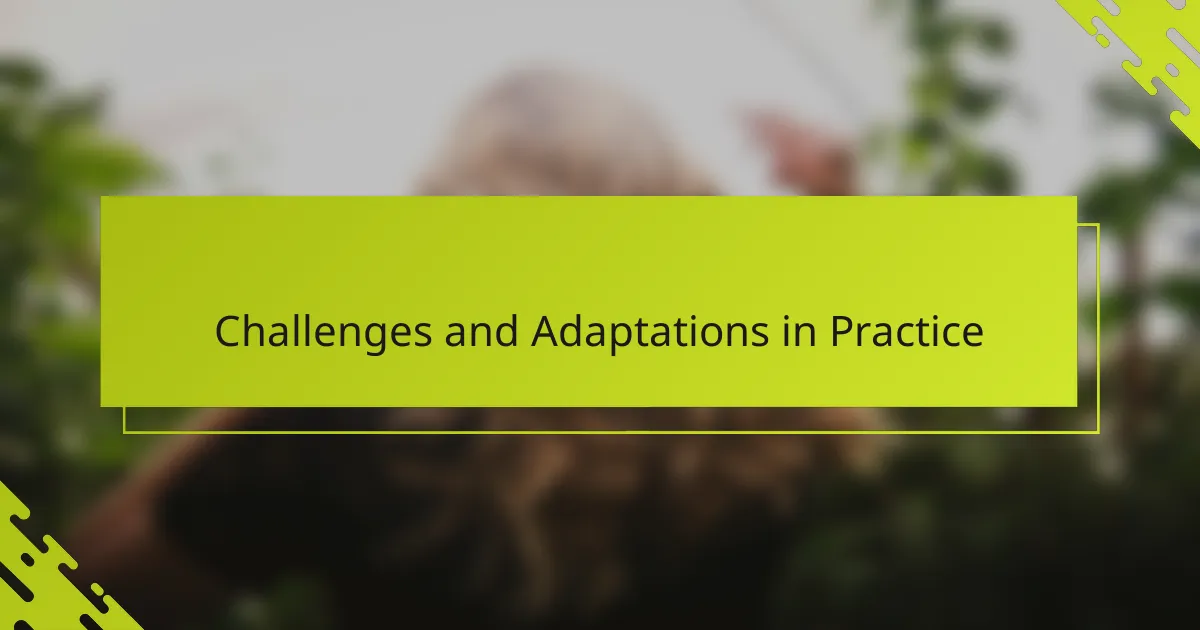
Challenges and Adaptations in Practice
Sometimes, despite the gentle intentions behind mindfulness, I found it tough to stay present when my mind raced with worries or past shadows. Have you ever tried to be mindful but felt your thoughts pulling you away like a strong tide? That tension made me realize that adapting Kabat-Zinn’s practices meant gently embracing those moments of distraction instead of fighting them.
Another challenge was finding ways to make mindfulness feel relevant to my experience as a queer woman. Sitting quietly in meditation sometimes felt alien or even unsafe, given how my body holds memories of trauma or exclusion. So, I started experimenting—shorter sessions, movement-based mindfulness, or even mindful creativity—which helped me feel more grounded and authentic in the process.
I also noticed how important community support is when practicing mindfulness in spaces that aren’t always inclusive. Sharing struggles and adaptations with friends created a sense of belonging that made the practice feel less isolating. Have you found that having a circle who ‘gets it’ transforms a solitary practice into something deeply healing? I certainly have, and it’s been a vital piece in making mindfulness truly mine.
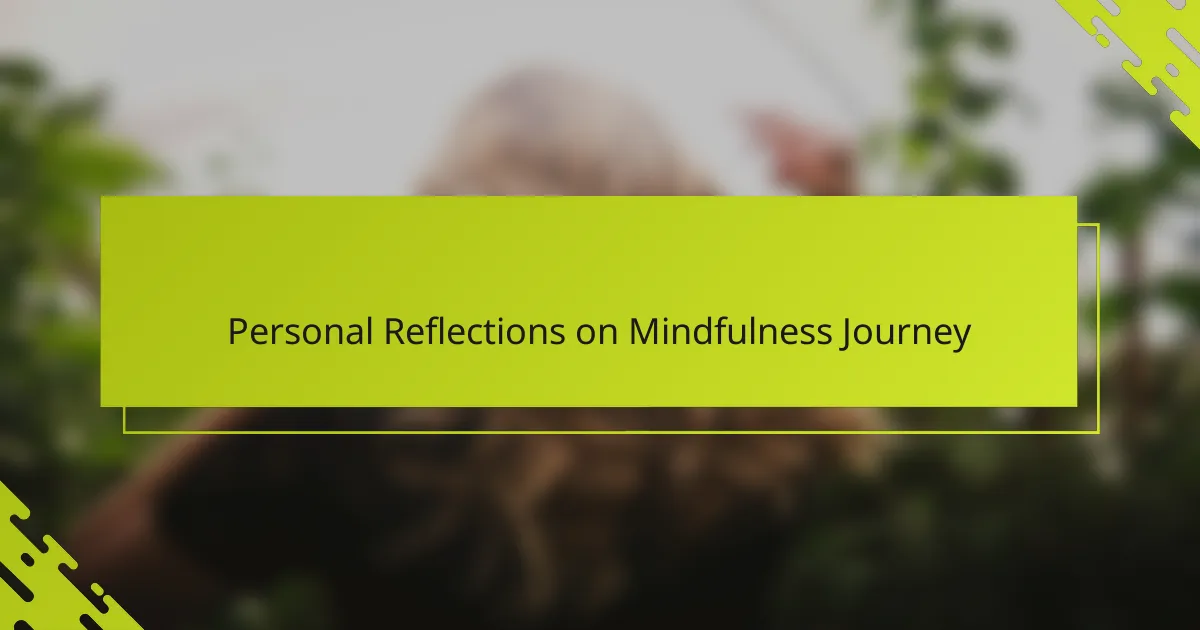
Personal Reflections on Mindfulness Journey
There have been moments when mindfulness felt like a quiet companion, gently reminding me to breathe when life seemed overwhelmingly loud. I remember one afternoon, caught in a storm of anxiety, simply noticing the rise and fall of my breath brought a surprising calm—as if I’d found an anchor amid chaos. Have you ever experienced that sudden pause where everything slows down just enough to catch your breath?
Sometimes, my journey with mindfulness has been less graceful. Distraction would sneak in, my mind darting between worries, and frustration would bubble up because I “wasn’t doing it right.” Yet, gradually I learned that those interruptions are part of the process—not failures to overcome but invitations to return with gentleness. Isn’t that meeting yourself with kindness what true mindfulness is about?
What stands out to me is how this practice has deepened my relationship with myself. It’s not about perfection or escaping hard feelings but about embracing the full spectrum of experience. Through mindfulness, I’ve discovered that showing up, even in small moments, opens a doorway to self-acceptance—a practice I think resonates especially within our queer women’s community. Wouldn’t you agree that making space for all parts of ourselves is one of the bravest things we can do?
